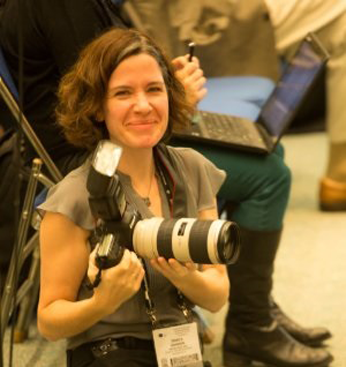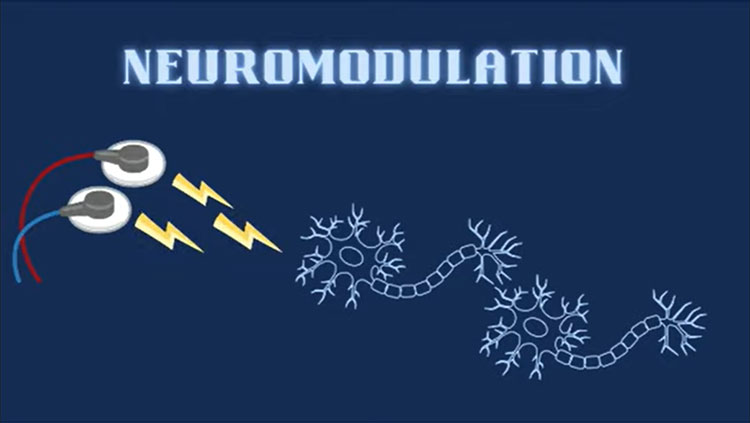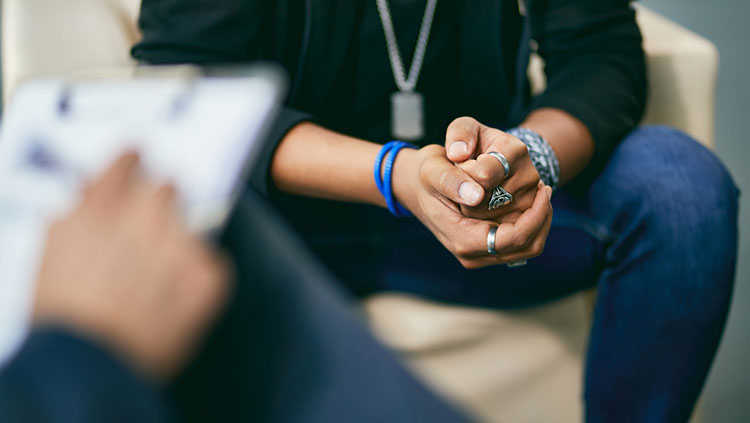Constructing Sound: Auditory Brainstem Implants
- Published2 Jul 2015
- Reviewed2 Jul 2015
- Author Jessica P. Johnson
- Source BrainFacts/SfN
For a small number of children who are deaf, traditional treatments are ineffective. But new technologies are now filling in these gaps and providing relief for previously untreatable cases. In this BrainFacts.org podcast, hear about these new advances and how they have the potential to change the lives of deaf children.
Have a question about what you just heard in our podcast? Just ask! Submit A Question
Music by Josh Woodward, used under a creative commons license.
CONTENT PROVIDED BY
BrainFacts/SfN
Transcript
I'm Jessica Johnson for BrainFacts.org.
Two to three children out of every 1,000 born in the United States enter the world with a hearing deficit, according to the Centers for Disease Control and Prevention. Effective treatment strategies include hearing aids and cochlear implants. But for children born without cochleae—the spiral-shaped bones located in our inner ears that pick up sound vibrations—or for children born without cochlear nerves, which process and carry these signals to the brainstem, these treatments are ineffective.
Laurie Eisenberg: In some ears, the anatomy just is not there to support a cochlear implant.
SfN: Laurie Eisenberg is a professor of research otolaryngology at the University of Southern California and a lead investigator in a study on the safety and efficacy of an alternative to cochlear implants in children—the auditory brainstem implant. Auditory brainstem implants, or ABIs, bypass the cochlea and auditory nerve by delivering sound information from the environment directly to the brainstem.
Marc Schwartz: We're dealing with a small set of patients who have no nerve connecting the cochlea to the brain or actually have no cochlea at all. So obviously, if there's no cochlea at all or if there’s no nerve attaching the cochlea to the brain, a cochlear implant doesn’t work.
SfN: Marc Schwartz is a leading expert in ABI implantation in adults and one of two neurosurgeons at the House Clinic and Huntington Medical Research Institutes who collaborates with Eisenberg in the clinical trial.
Schwartz: Basically our goal with surgery is to put an electronic stimulator on the brain, right at the place on the brain where the hearing nerve enters the brain and then provides sound information for hearing. So with our surgery, we are bypassing the cochlea and the nerve to put the electrode directly on the brain. It's a much larger operation than a cochlear implant. So a cochlear implant is basically ear surgery which is directed right into the bone and is not going into the area that is right next to the brain. This is real brain surgery. We have to expose the brain, we have to get to the brainstem which is a very delicate part of the brain and actually quite deep, to find the right location. And then hopefully the brain is able to make sense of the information that we're providing. Which is a little more complex for the brain to do compared with getting the information from the cochlea.
Eisenberg: The difference with an auditory brainstem implant is that we know very little about what's actually being received. There are so many factors involved: where that electrode array is sitting on the cochlear nucleus and what neural tissue is being stimulated. And is the neural tissue delivering signals at different frequencies or is it all around the same frequency? This is the information that we're trying to decipher in our study.
ABIs have been performed on adults in the U.S. for more than 35 years and in children in Europe since 1999, but it wasn’t until December 2012 that the U.S. Food and Drug Administration approved the clinical trial in U.S. children. Since then, teams from the New York University School of Medicine, the Massachusetts Eye and Ear Infirmary, and the University of North Carolina at Chapel Hill have joined the trial.
Eisenberg believes that the reluctance to perform ABIs in children stemmed from the fact that ABIs are typically only implanted in adults who have to undergo brain surgery anyway—during removal of tumors that render the patient deaf. She said it was difficult to convince the FDA to allow brain surgery in a young, vulnerable population of children who are deaf but otherwise healthy. But then something changed.
Eisenberg: All of a sudden families started going to Italy, leaving the United States at great personal expense to have this surgery. And then these families came back and approached our center about managing them. So our team started learning a lot more about ABIs and how to program the device. American families were so desperate to try and bring some hearing to their children that they were willing to go to Europe for this surgery even though the ABI hadn't gone through a formalized safety trial.
SfN: The FDA places restrictions on candidates accepted into the U.S. clinical trial. All of the children have to first try a cochlear implant in order to be sure that ABI surgery is their only hope of achieving some degree of hearing ability. But if the cochlear implant doesn’t work, the children can be scheduled for ABI surgery. Ten children between the ages of 2 and 5 years old will eventually receive ABI surgery in the collaborative study between the University of Southern California and the House Clinic in Los Angeles. In the last year, four children in the California study have already undergone ABI surgery and initial outcomes look positive.
Eisenberg: The last child that had surgery in our study really had a wonderful response to initial stimulation. Once he was first fitted with the device to take home to wear and he was looking around and he looks at his grandfather and his grandfather says "hi." And he looks at his grandfather, and this is a child who communicates through American Sign Language, and he starts to try and imitate "hi," and tries to use a spoken form using voicing and imitating with his grandfather. And really that was the first time his family really saw him attempt to communicate through spoken language. He and also some of the other children do make some auditory sounds, but they're really just vocalizations. They're really non-linguistic. But with him, it was this conscious attempt of trying to imitate what his grandfather was saying. And this was on really the first day. There really wasn’t a dry eye in the house.
SfN: So what is hearing like with an ABI? I asked Robert Shannon, a research otolaryngologist and biomedical engineer on the California research team, and a self-described “tech guy” who has worked to improve ABI devices since 1989. He started by describing how cochlear implants enable hearing.
Robert Shannon: Normally, cochleae are laid out according to pitch so that high pitch sounds are right at the entrance and as you go up the spiraled inner ear, it gets lower and lower in pitch. So cochlear implants are made to take advantage of that by putting electrodes along a thin electrode carrier, that then each electrode causes the sensation of a different pitch. We can take a cochlear implant, and produce information from just a few electrodes spaced along the different pitches in the cochlea. So we can reconstruct the world of pitch by stimulating the different electrodes in the proper sequence. And people can recognize words and even speak on the telephone. It's quite remarkable how little information changing in time you can use to understand speech.
SfN: Adults who learn to speak but become deaf later in life, can learn to unscramble the information sent to their brains by the cochlear implant so that it eventually sounds close to the normal speech they remember.
Shannon: So now when we go to a brainstem implant, we have the additional problem that the pattern of information is almost completely scrambled compared to the normal pitch map because the connection to the nervous system of the electrodes is not as clear cut. There are multiple representations of pitch in the brainstem and our electrode sits on the surface. So it really doesn't make a good connection to those maps in a very coherent way. Even though the order of this stimulation is completely different, completely scrambled up, and degraded from its normal sensory pathway, adults can achieve recognition of speech with an ABI and children can learn it. The fact that some of these people can understand speech and talk on the phone, shows that it's not too crude of a stimulation to allow their brains to adapt to it.
Schwartz: Our experience with adults is that their results are very variable. Mostly every patient who gets it is happy with it and gets something. But it's a minority of patients who get a lot of speech understanding. So it's only our very high-performers who can understand speech and only a very few who can use a telephone. Many patients get less than that but are very happy to have it because it connects them to their environment.
SfN: When it comes to young children, Shannon said that those who are born deaf can learn to map sound information delivered by a cochlear implant from scratch without previous hearing experience. And evidence from ABI surgeries performed in Europe indicates that the same is true for ABIs.
Shannon: For children who've never heard before, that pattern of information is rich enough that they can learn to use that to understand speech. But if you implant a child at say age 10, who's never heard before, that doesn't happen. There is a critical period there where if you don't get the implant in fairly early, there's limited gains to be had from providing sensory information beyond the stage of early childhood.
SfN: When a child’s brain doesn’t receive sound stimulation beginning at birth, the brain regions that would normally process auditory information become devoted to processing other functions. By late childhood, it becomes very difficult to reprogram the brain, and the chances that an ABI could stimulate unintended systems, such as emotions, breathing, or heart rate, increases.
Shannon: The people who do these kinds of devices—the early adopters—are a very special breed of patient. They know that there are potential risks, but they also know that somebody has to do it or the technology won't advance. So the patients are real pioneers. They know there's risks and they're equal participants in all of the parts of the research.
SfN: Thanks for listening. Check out more information about how the brain processes sound at BrainFacts.org.
Also In Therapies
Trending
Popular articles on BrainFacts.org


















